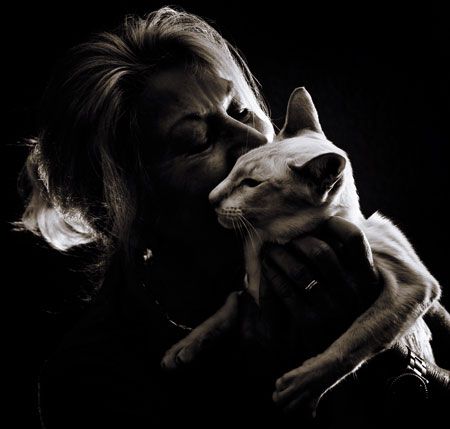Going gently into that good night
Creating an exceptional end-of-life experiencefor the veterinary client and the patientis possible.

It's not easy. In fact it might be the hardest part of a veterinarian's job. At a session on euthanasia and end-of-life care at the CVC in San Diego, Elizabeth Colleran, DVM, DABVP (feline) discussed how to make this difficult part of practice not only a gift for suffering patients, but an exceptional service for clients-even when things don't go as planned.
• Talk the client through the experience ahead of time, including all the drugs, what the drugs will do (“This is sedative. It will heavily sedate your pet so your pet will be in a deep sleep,” for example. “This is the euthanasia solution. I will give it after the sedative/medicine and it will stop your pet's heart.” Choose vocabulary carefully depending on the age, mental status and maturity of your clients), any reflexes the body may have as the pet passes, and the possibility of the pet's losing urine or bowel control. In my experience, clients who know what to expect are not disturbed when their pets have a reflex or other odd reaction when passing. If the pet is in a client's lap, I lay a pee pad under the pet in case the pet releases urine or feces.
• The gift of euthanasia should not be painful or scary for the pet. The key is heavy sedation before any euthanasia solution is administered, says Colleran. Nothing is given intramuscularly, and anything that might sting is considerably diluted. In some very ill patients, the sedative may be all that is required to end this precarious life. Clients should be prepared for that, too.
For cats, Colleran recommends intravenous administration of euthanasia solution via a butterfly catheter in a hind limb. Most of these cats have chronic pain, are hyperalgesic and can have significant allodynia, making intravenous catheter placement excruciatingly painful. I would only use a catheter if one were in place for other reasons.
• Let the owner know that the pet has passed. After administering the drugs, always check the heart and confirm the death for the client. Don't leave the room quickly; stay long enough to ensure that the client has come to terms with the loss.
What to do when things go wrong
Veins collapse, patients have unusual responses to medication-even the best veterinarian can have euthanasias that go south. Here is what to do when things don't go as planned:
• Explain everything as you are doing it. Tell the owner that even though things aren't going as planned, this is not an experience that is causing suffering for the pet. The sedative/medicine you gave a few minutes ago will keep her relaxed and unhurt by this event (even though it might be causing suffering for the owner and you).
• Say you're sorry. Saying you are sorry doesn't mean you did something wrong; it just means you are sorry it happened. Saying you are sorry is a powerful way to make sure you remain bonded to the client and that he or she will be back to see you, if or when that client gets another pet.
Acceptable alternative routes for euthanasia administration
There may be times when traditional euthanasia methods may not be the best option for feline patients, especially when intravenous administration routes are not available. The following methods are not recommended in dogs because of large volumes of euthanasia solution required and length of time to effect. Further, Colleran only recommends these routes in cats that are already heavily sedated, unconscious or anesthetized.
Intraperitoneal. For dehydrated cats with poor venous access, the intraperitoneal injection route is considered reasonable. Prepare the client that the pet will not suffer and that painless death will ensue in about 20 minutes. This route can be preferable for some clients who want additional time to say goodbye. Note that there is a dosage alteration with this method-calculate a three- to four-fold increase in the volume injected.
Intrarenal. In thin cats, intrarenal administration of the euthanasia solution may be preferable. The easily palpable left kidney rests outside the retroperitoneal space and is accessible for intrarenal injection. In a recent study by Kathleen Cooney, DVM, MS, time to cardiopulmonary arrest after intrarenal injection of euthanasia solution was less than one minute, and 95 percent of heavily sedated cats had no reaction to the injection.1 Cooney recommends a 3 to 6 ml total dose per cat; inject until a palpable bleb in the kidney is felt.
Avoid this … One method that should rarely-if ever-be used considering all other options, is intracardiac injection. The AVMA guidelines for humane euthanasia state intracardiac injections should not be performed on conscious animals. Colleran goes a step further to say it would be unethical in a sedated, nonanesthetized cat and highly inappropriate in the presence of owners.
Reference
1. Cooney K. Research findings for intrarenal injection study in cats. American Veterinary Medical Association Human Endings Symposium, Nov 2014.